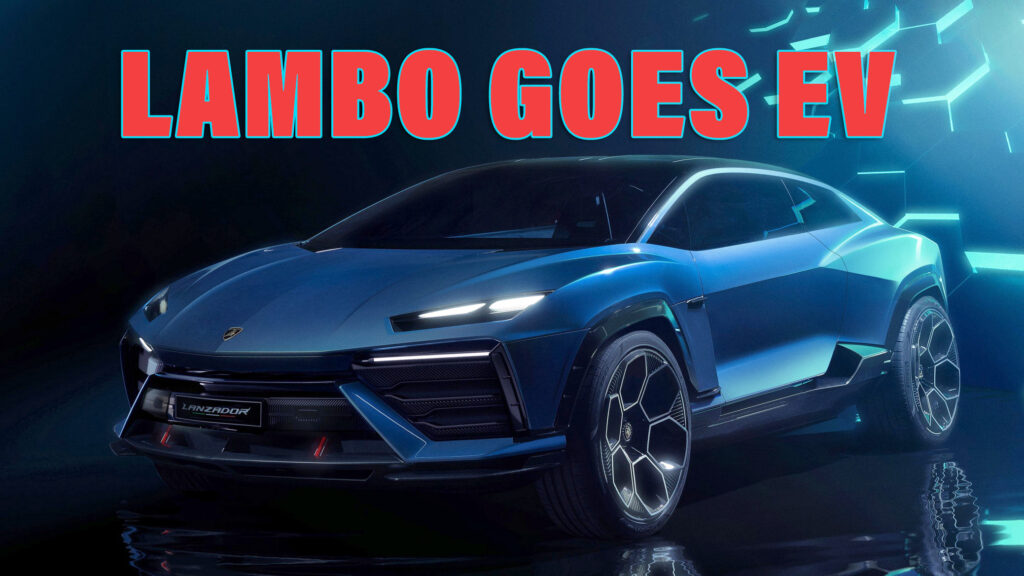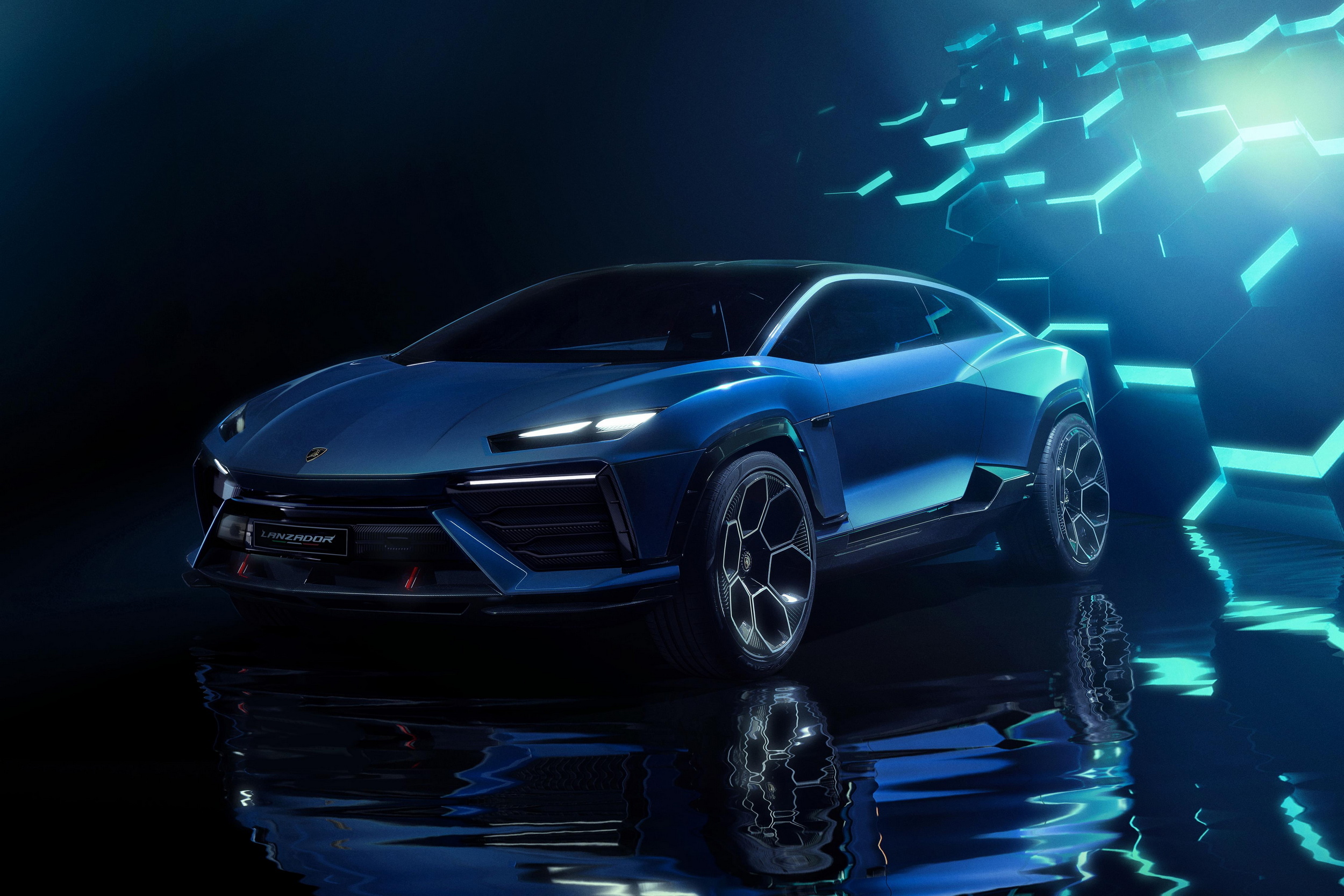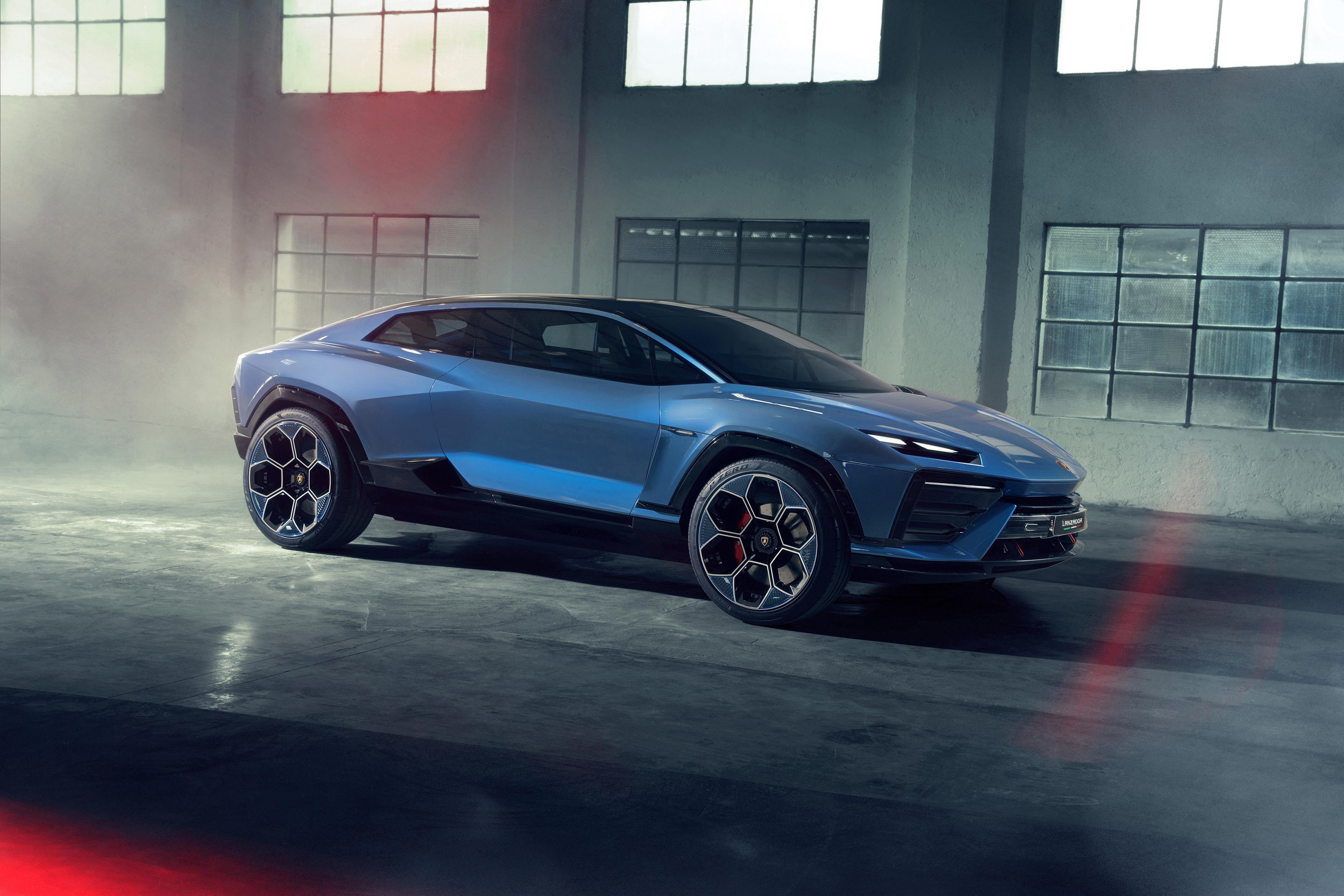Lamborghini is going electric, and the Lanzador concept shows us precisely what we should expect from the company’s first foray into the world of battery-powered machinery. Officially, this is merely a preview of what we could expect from the company come 2028. Unofficially, the concept provides a fairly realistic look at what will become the company’s fourth model and will enter series production with minimal changes.
The Lanzador EV, unveiled at Monterey Car Week, is described as a “high ground-clearance GT.” Usually, we’d assume that that’s just a better way of saying it’s a crossover. However, the three-door body style has more going for it than the crossover label typically offers.
From the front, it’s unmistakably a Lamborghini. From the side and rear three quarters, it almost mimics a squat dessert dune buggy — or perhaps one of those Tamiya RC cars. There’s no mistaking this three-door SUV for something like, say, the original Range Rover Evoque. Nor does it end up looking like a Honey-I-shrunk-the-Urus.
Related: You Can’t Buy A Lamborghini With Pure ICE Anymore As They’re All Sold Out
We’re told that the inspiration for the exterior comes from a mixture of legendary Lamborghini models, including the Sesto Elemento, Murcielago, and the Countach LPI 800-4. Meanwhile, the driving position is said to have been honed from the Huracan Sterrato, with a bit of spaceship mixed in. So far, so Lambo.
Inside the cockpit, you get a better sense of where that spacecraft influence has been channeled into. The dashboard and center console design is almost skeletal, but the designers stress that they’ve tapped into the versatility afforded by the electric drivetrain to create something that is also usable on a day-to-day basis. As such, the rear hatch opens up to a hefty load area, which can be expanded by folding the rear seats. Plus, there’s extra storage in the frunk, making this an ultra-practical take on a GT. Espada 2.0, then? Perhaps not entirely, but there’s no denying there are shades of it in the 2+2 ethos.
Meanwhile, the concept’s interior features a heavy emphasis on sustainability, as well as boasting that most materials are made in Italy. The thread found in the nylon seats is made from recycled plastic, while many of the non-visible plastics (such as the seat’s foam) are made from recycled 3D-printed plastic. The carbon fiber used inside features reclaimed elements, such as recycled PET, and even the water used to tan the leather was repurposed from olive oil plants.
Unsurprisingly, Lamborghini stops short of revealing too many details about the concept’s drivetrain. There are no power, performance, or range figures to speak of. However, we were let in on some of the finer points of the car’s innovative tech.
The Lanzador features full-time all-wheel drive with two motors powering each set of wheels. To ensure that the car conforms to dynamic expectations, the rear axle features a form of torque vectoring. There’s also a new Lamborghini Dinamica Veicolo Integrata (LDVI) driving dynamics control system. With a battery of sensors, the new tech aims to tailor the car’s dynamics to the individual driver through a sophisticated algorithm.
More: One-Off Lamborghini Huracan Sterrato Opera Unica Has A Hand-Painted Crystal-Blue Shade
Couple this with active suspension and active aerodynamics, and you have a concept that appears to be mainly focused on the on-road half of the crossover equation — we can’t help but think that a “Sterrato’d” version could serve as a tasty follow-up to the existing model.
Lamborghini is already aiming to have an entirely electrified line-up by the end of 2024, but so far has not announced plans to go all-in on EVs, instead focusing on carbon neutrality and leveraging hybrid tech. An all-electric Urus will join the Lanzador come 2029.
The production Lanzador will be built at the firm’s Sant’Agata Bolognese factory, with a site expansion planned to facilitate production. However, by the time the Lanzador translates into something tangible, it’ll be 2028 — about three years after home rivals Ferrari plan on unveiling their first EV. Will the Lanzador be able to offer buyers a compelling alternative? Only time will tell.









































































